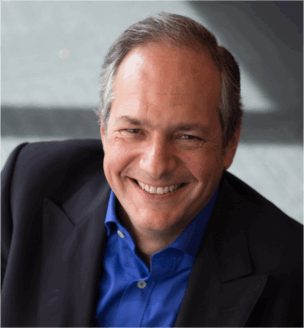
A lean view on... the fight against climate change
INTERVIEW – What is the contribution of Lean Thinking to the battle against climate change? Michael Ballé discusses the Toyota approach to sustainability and what it takes to push "green" to the top of the business agenda.
Interviewee: Michael Ballé, lean author, executive coach and co-founder of Institut Lean France.
Interviewer: Roberto Priolo, Managing Editor, Planet Lean
Roberto Priolo: The idea of lean and green is not new, but it still hasn't fully made its way into the way of thinking of most lean practitioners. Why is that?
Michael Ballé: The value of lean is that it is a fully functional paradigm to create more company value by focusing on customers and better involving employees and suppliers. There are many concepts and tools associated with it. But to really “get” lean and interpret its tools correctly, one must first abandon the taylorist paradigm in which we’ve all been educated. When they are exposed to new ideas – like lean and green – lean practitioners are therefore faced with the double problem of 1) acquisition and 2) translation. The difficulty is compounded by the fact that most senior management are not looking for real, radical change. Most of the time, sadly but unsurprisingly, they’re seeking confirmation: tell me that what I’m doing is already lean.
Lean is great. It works. It’s fun. But the learning investment can’t be underestimated. Lean practitioners progress from learning one tool to the next, grasping the next deep concept. The slope is steep and the mountain seems endless and, understandably, many struggle with moving on to the next field or domain. For instance, as lean practitioners, we now need to understand software, which is becoming like electricity and is in everything, as well as green because of the emerging global crisis.
Interestingly, Toyota, our exemplar, is well ahead of the curve on both accounts, but as has always been the case their answers are very specific to their culture and industry and, to a large degree, mysterious. It’s hard to get access, to hear it from the horse’s mouth, so to speak, and then to figure it out. So, I’m not surprised that most people shy away from the challenge. A pity, but understandable.
RP: What does a lean and green strategy look like for a company?
MB: I suspect the problem is much deeper. In the West, we can see our political environment shifting inexorably towards two rather unappealing features. One is the 24/7 news frenzy in which we are bombarded with more news, real or fake, newsworthy or futile, and this has us addicted to the quick and easy, the superficial, the consumable information, the packaged ideas. Strategies need to be both simple and already known. Not a great help for thinking our way out of the collective hole we’re digging ourselves into. As we can see with the repeated financial crises since the end of the Cold War, most people are insensitive to systemic risk because they feel that someone else should do the work (what can they do?) and that someone else will get it worse first (we should be okay for a while). While this has never been a great basis for policy, this is a natural reaction and the question is how to overcome it.
At the same time (and maybe for the same reasons) politicians are turning increasingly authoritarian in asserting their solutions, whatever they may be, for their followers and damn the rest of us. This revolutionary language is all about taking power and imposing solutions, and compounds the problem of global inaction – if I don’t feel concerned or involved with any of these proposals, such as changing our lifestyles, abandoning the idea of growth, and other biggies, why should I get into this fractious mess? The language of politics has become so brutal and hateful that regular folk are unlikely to wade in for fear of getting caught in the crossfire.
As a result, what is progressively disappearing is a process to find solutions together when these solutions are not yet known. This is one thing lean excels at. Its highest values are joint problem solving from going to the gemba and listening to what all people involved have to say and then building global answers from local ideas and initiatives. Lean offers us a way to face the green issue more than a ready-made solution per se. A lean strategy to sustainability would look like:
- Ballpark goals for the next 10 years: what would success look like in 2030? In 2040?
- Key questions we need to answer that are specific to our activities – for instance, if you’re a digital company, reducing water usage might not be such a problem but understanding the environmental impact of servers in Iceland is a massive challenge.
- Concrete – and relevant – steps we can take to better understand the problem.
Let’s start there and see where we get to – we need to find the correct strategy, not adopt an off-the-shelf one hoping it will work for us (or worse, copy and adapt from existing “best practices” from consultants reports and white papers).
RP: A big challenge in sustainability is measuring the cost of "externalities" – the impact of our work and business on the environment. Lean has a way of bringing to light information that is hidden... can it help us there? The impact of that would be quite big.
MB: Absolutely. Lean is a learning system that rests on practice, theory and, most importantly, measurement. The first real commitment to a green strategy is to start measuring green performance, in whichever way is relevant to your practice. Carbon footprint is a good place to start, as is waste of resources. Measuring specific wastes or impacts is the first step to committing to a green strategy – not so easy, but when you see the efforts companies make to measure productivity, not so hard either. It’s mostly a matter of facing the issue and, well, doing it.
RP: Just like individuals and companies are reluctant to give up their habits for the sake of the environment, so it's been hard to find consensus on the global stage. Whatever agreement has been reached is likely to have limited results (if any). We need to be more ambitious as a global community! Can lean help us to form a united front against climate change?
MB: With the Covid-19 pandemic, we can see where waiting for a global consensus on the environment will lead us: more expert debates, more random governmental action (or inaction), and very little progress. The key element to coordinating any response is leadership – the companies that get there first and prove their way is viable will have copycat followers. People are not that great at inventing their own solutions, but happy to follow when a reasonable solution is on offer. Look at how Toyota and then Tesla have changed the frame – and the automotive field – by simply offering greener vehicles. Tesla is full electric. Toyota is generalizing hybrid technology throughout its range and phasing out diesel in Europe. This puts pressure on their competitors to catch up and radically changes the market’s landscapes.
Rather than waiting for a global consensus we need more companies that take that kind of leadership and actually show it can be done, and that customers prefer greener solutions. Yes, there certainly is an intention-action gap. Many consumers say they prefer greener solutions but then they vote with their wallets and purchase the most practical or the cheaper. Still, real solution will appear in unexpected ways. Nicolas Chartier, co-author of The Lean Sensei, founded a company that sells cars over the internet and says the demand for refurbished second hand cars is booming – a key element of the circular economy. As someone who sells cars, he has long asked himself how he could contribute to the green movement. Now he sees that by better refurbishing cars (so people purchase something that feels like new) and encouraging the growth of this business, he is helping the circular economy to establish itself more firmly, which, now that we see it, will be a necessary part of the global solution. The point is we need a way to discover where future solutions will be, not just apply currently known ideas – which inevitably will turn out to be wrongheaded.
RP: Toyota has been leading the way in the development of greener technology. What can we learn from the company and its approach to sustainability?
MB: In this, as in lean, Toyota remains a guiding beacon. Its green approach has been spectacular in its breadth even if not as radical (or loved by the media) as Tesla’s full electric strategy. Toyota’s green approach is not just about cars, but about process as well. It looks at both the impact of its product (cars on the road) and the impact of the company itself (how these cars are made):
- Product: a full hybrid range and more electric cars, or hydrogen-fueled cars in order to reach zero C02 emissions by 2050.
- Process: a net positive impact challenge in order to transform the way cars are made by focusing on limiting water usage and reducing all resources waste as well as creating low-energy machines that consume less energy.
These two challenges translate concretely in a multitude of local initiatives as car designers and plants across the world seek new opportunities and try new ideas. It is developing the concept of “econohito”: eco-friendly people coming together to invent new ways.
As with car refurbishment, these solutions can be surprising, and a far cry from what people usually think about when they think “green”. For instance, karakuri kaizen devices built by the operators themselves replace hydraulic- or electric-powered machines with simple devices that use gravity – and ingenuity – to move parts around. Following Toyota’s example, Cyril Dané’s company AIO is now teaching other automakers to design and make these karakuri devices in order to green their production lines – as they ease the ergonomic burden of operators.
I bought a Prius as soon as I could afford one, more out of militancy than because I wanted the car. It was an early model and I completely fell in love with it (to my surprise) – mostly because of the incredible comfort and quietness of its interior. I now drive a plug-in Prius model – not as radical as a Tesla, I agree. At the time, I remember how auto executives hated my car with a passion. I don’t know if they knew it, but something in their unconscious saw what was coming. Toyota opened the way, Tesla moved in with a vengeance (their cars are incredible). Toyota is now trying the gutsy gambit of hydrogen-powered cars. All other automakers are scrambling to catch up.
This is how I believe we will find global solutions – leaders discover the way, others play catch-up, the world moves forward. What lean really has to offer is not off-the-shelf pre-packaged solutions. Loving the package more than what is inside is the drama of the current zeitgeist. But I believe that as we progressively realize how bad and deep our problems are, this will change and people will focus again on solving deep problems. Lean offers a method to discover solutions where we thought they didn’t exist, such as mass reuse of cars remade as new, karakuri devices in every production site, or closed-loop water usage (to name but a few examples).
The true lean goal to adopt is not this or that strategy, but econohito – bringing together people with a true eco-friendly mindset and passion and helping them realize their insights and achieve their dreams. They will be leading us into the greener world we seek.
THE INTERVIEWEE

Read more


FEATURE – At Malamulele Onward in Johannesburg, a do-it-yourself lean transformation is increasing the impact the nonprofit organization is having on South African children living with cerebral palsy.


FEATURE – Lean healthcare is new to China. The authors share some examples of improvements projects taking place in Chinese hospitals, which they hope will inspire more organizations to take lean on.


FEATURE – At Toyota, led by senior executives, suggestion schemes have contributed to decades of improvement. This article explores why they are so effective and encourages you to try one out for yourself.


FEATURE – No healthcare transformation can succeed without a system-wide approach to change. In this article, Dr. John Toussaint, offers his take on the issue, providing a guide for healthcare executives.

